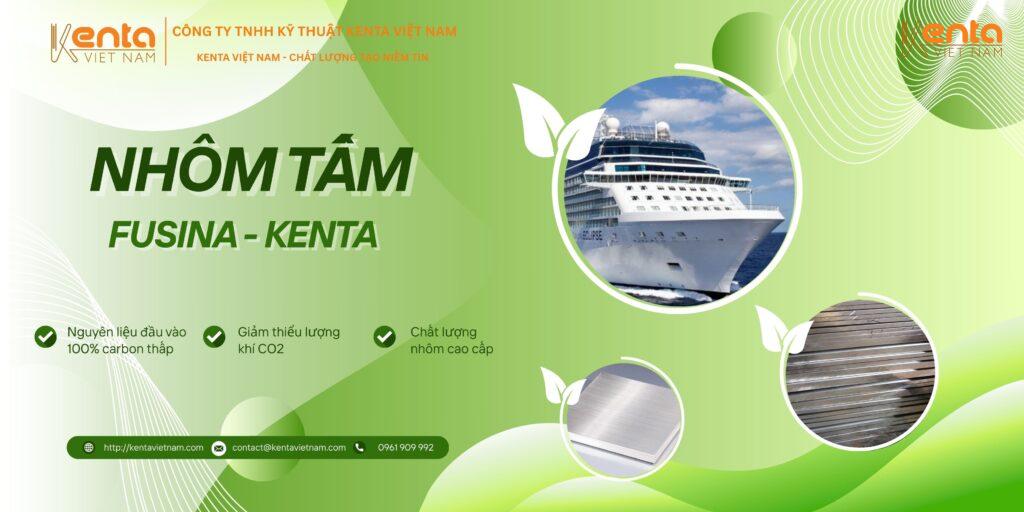Knowledge, Technology
Aluminum Sheet 5083 H111, H321, H116: Characteristics, Standards, and Industrial Applications
Aluminum Sheet 5083 H111, H321, H116 is an aluminum alloy belonging to the 5xxx series with a high magnesium content, notable for its corrosion resistance and stable mechanical strength. In the marine, oil and gas, and precision engineering industries, this material is considered a standard choice. The article below will analyze in detail its composition, properties, the differences between the three tempers H111, H321, H116, and provide guidance on how to choose the appropriate one.
Alloy Composition and Scientific Properties
Aluminum alloy 5083 belongs to the Al-Mg group, where magnesium plays a primary role, accounting for approximately 4.0–4.9% by weight. The presence of manganese refines the grain structure and enhances structural stability. Although chromium accounts for only a small proportion, it plays a crucial role in limiting intergranular corrosion, a common risk in marine environments. Additionally, small amounts of iron and silicon exist as impurities but are strictly controlled according to ASTM B209 and EN 485 standards. This combination gives aluminum sheet 5083 high corrosion resistance and maintains mechanical strength even after welding.
Outstanding Mechanical Properties of aluminum sheet 5083
In terms of mechanical properties, aluminum sheet 5083 has a tensile strength ranging from 275–350 MPa, along with an average yield strength of 200–240 MPa. This is very high compared to many other non-heat-treatable aluminum alloys, allowing the material to withstand heavy loads under harsh conditions. Elongation reaches 10–17% depending on the H temper, thereby maintaining the necessary ductility for processing. The specific density of aluminum is only about 2.7 g/cm³, significantly lower than steel, providing a great advantage in reducing the weight of mechanical structures, ships, and transportation vehicles.
Differences Between Aluminum Sheet 5083 H111, H321, and H116 Tempers
When it comes to aluminum sheet 5083, the distinction between H111, H321, and H116 tempers is extremely important. The H111 temper is a rolled product that is lightly softened, maintaining moderate strength but being easy to bend, form, and stretch, making it very suitable for parts requiring cold deformation. In contrast, H321 is stabilized after deformation, thereby enhancing its ability to retain mechanical properties long-term, especially suitable for continuously loaded parts. H116, on the other hand, is specialized, being controlled to minimize the risk of intergranular corrosion, making it almost the default choice in the marine sector, where the material is frequently in direct contact with chloride-rich seawater. Understanding these differences not only helps engineers select the correct aluminum sheet for each project but also contributes to optimizing costs and project lifespan.
Machinability and Weldability of Aluminum Sheet 5083
Aluminum Sheet 5083: has good machinability using various modern methods. Cutting technologies such as laser, waterjet, or plasma all produce precise cuts, smooth surfaces, and limited thermal deformation. In the field of welding, alloy 5083 is particularly compatible with MIG/TIG welding when using appropriate filler wires such as ER5356 or ER5183. The resulting welds are typically strong and maintain uniform corrosion resistance; however, temperature and residual stress need to be controlled to avoid warping. Surface finishing by anodizing not only increases corrosion resistance but also improves aesthetics. For outdoor structures or marine environments, powder coating or PVDF coating is an effective solution to extend lifespan.
Applications of Aluminum Sheet 5083 in Various Industries
In the marine industry, aluminum sheet 5083 is often used for ship hulls, decks, and seawater tanks, thanks to its superior chloride corrosion resistance. In the oil and gas sector, fuel tanks, offshore drilling rig structures, or pipeline systems often prioritize the H321 temper to ensure long-term strength and mechanical stability. In mechanical manufacturing, H111 proves more suitable when bending, folding, or complex cold working is required. Additionally, alloy 5083 is also found in the automotive and truck industries, especially in parts requiring weight reduction such as fuel tanks or chassis structural components.Clearly, the diversity of H states has transformed aluminum 5083 into a versatile material, capable of meeting the requirements of various fields.
Role of Kenta Vietnam Engineering Co., Ltd.
In Vietnam, Kenta VietNam is a supplier of FUSINA 5083 aluminum sheets with a full range of H111, H321, and H116 states. Kenta not only provides materials with international standard CO/CQ but also offers consulting support in selecting the appropriate alloy and state for each project. With a team of experienced engineers, Kenta accompanies customers from the design phase, custom cutting, to production implementation, ensuring that every material selection decision brings optimal technical and economic efficiency. This is the differentiating value that Kenta brings to industrial partners both domestically and internationally.
5083 H111, H321, H116 aluminum sheets are not only common materials but also strategic solutions for projects requiring high corrosion resistance, stable mechanical strength, and light weight. Understanding the characteristics of each H state, from the ductility of H111, the stability of H321, to the specialized nature of H116, will help businesses make the right choice, extend product lifespan, and optimize production costs. With the companionship of Kenta VietNam, you can be completely assured of material quality and technical services, thereby creating a solid foundation for industrial constructions and products.




















